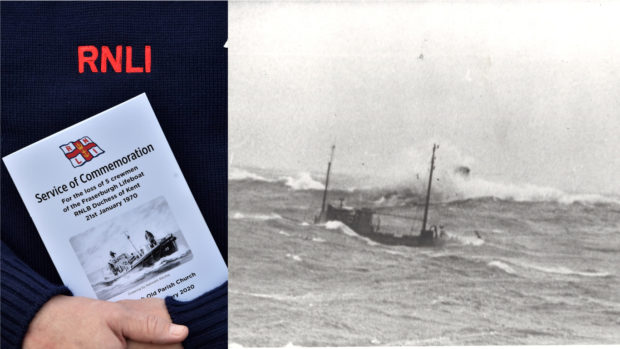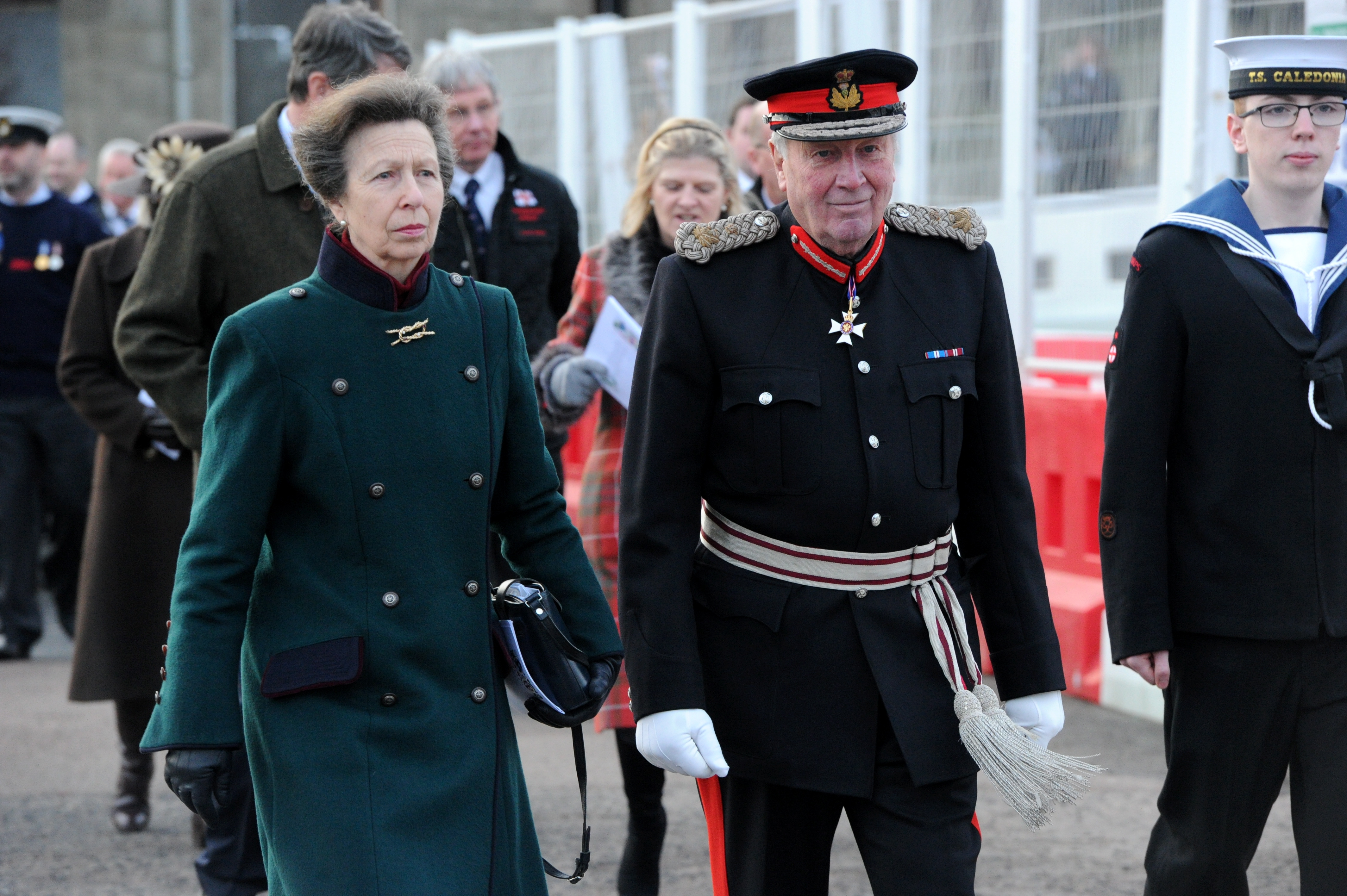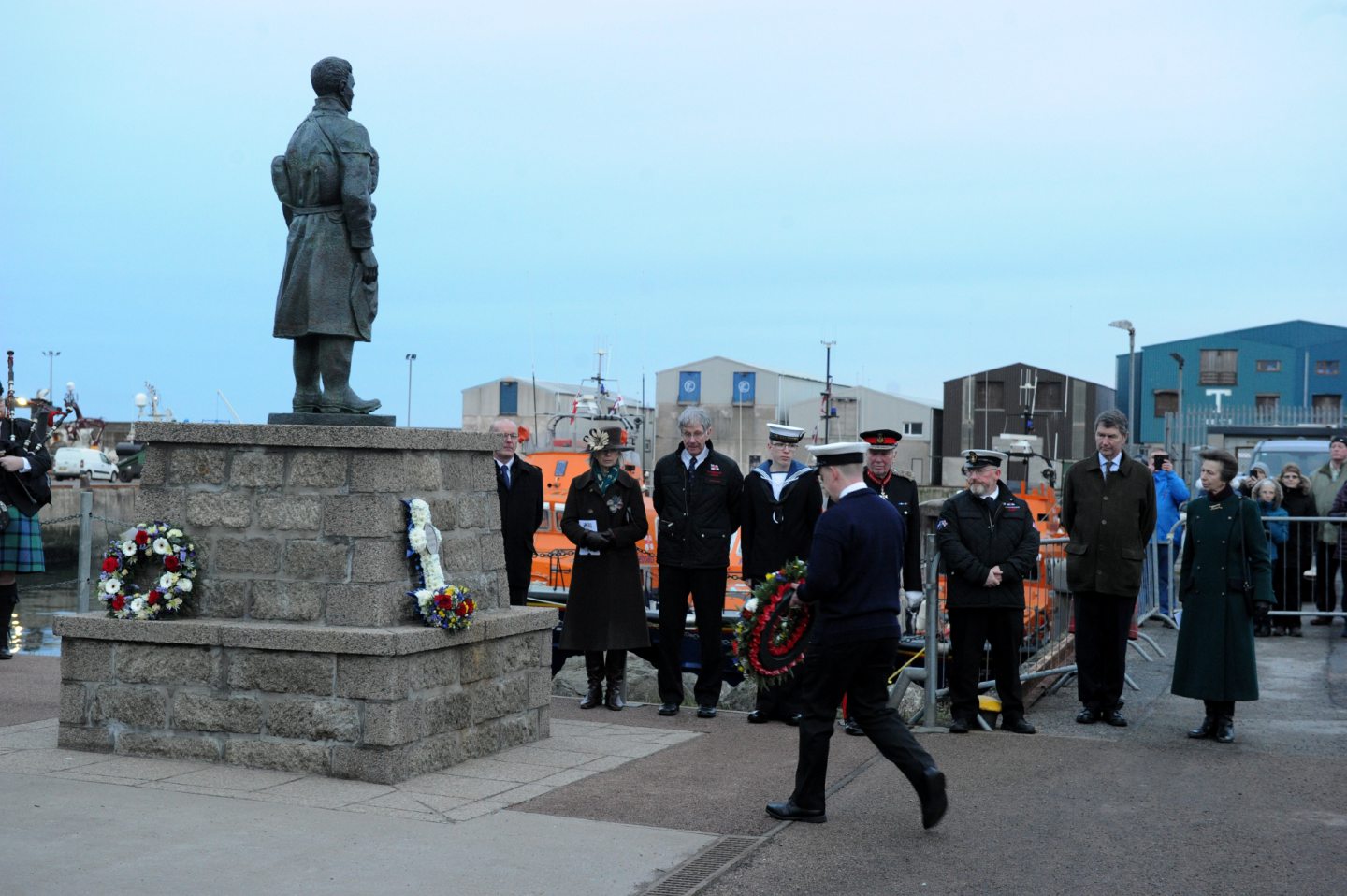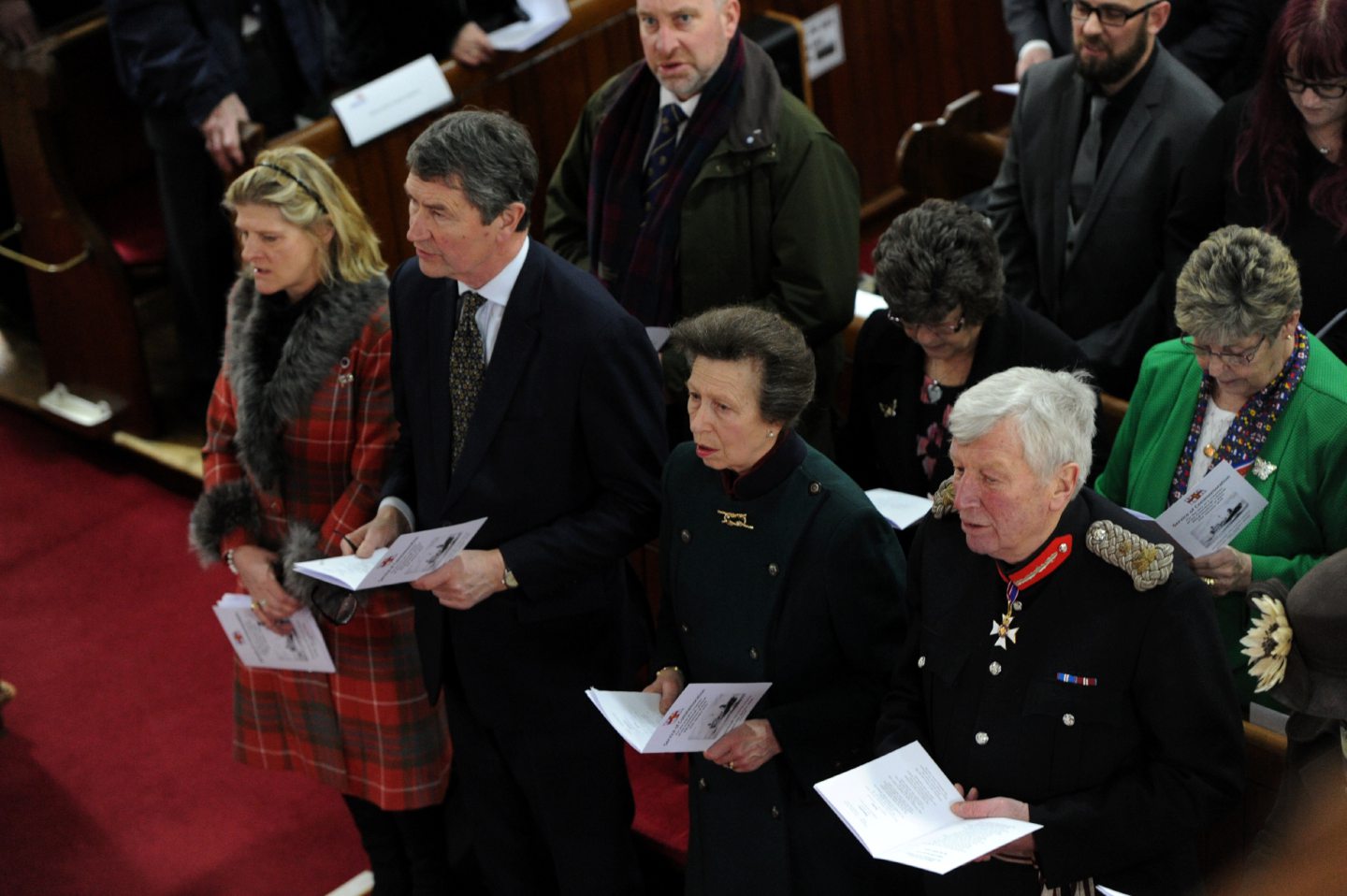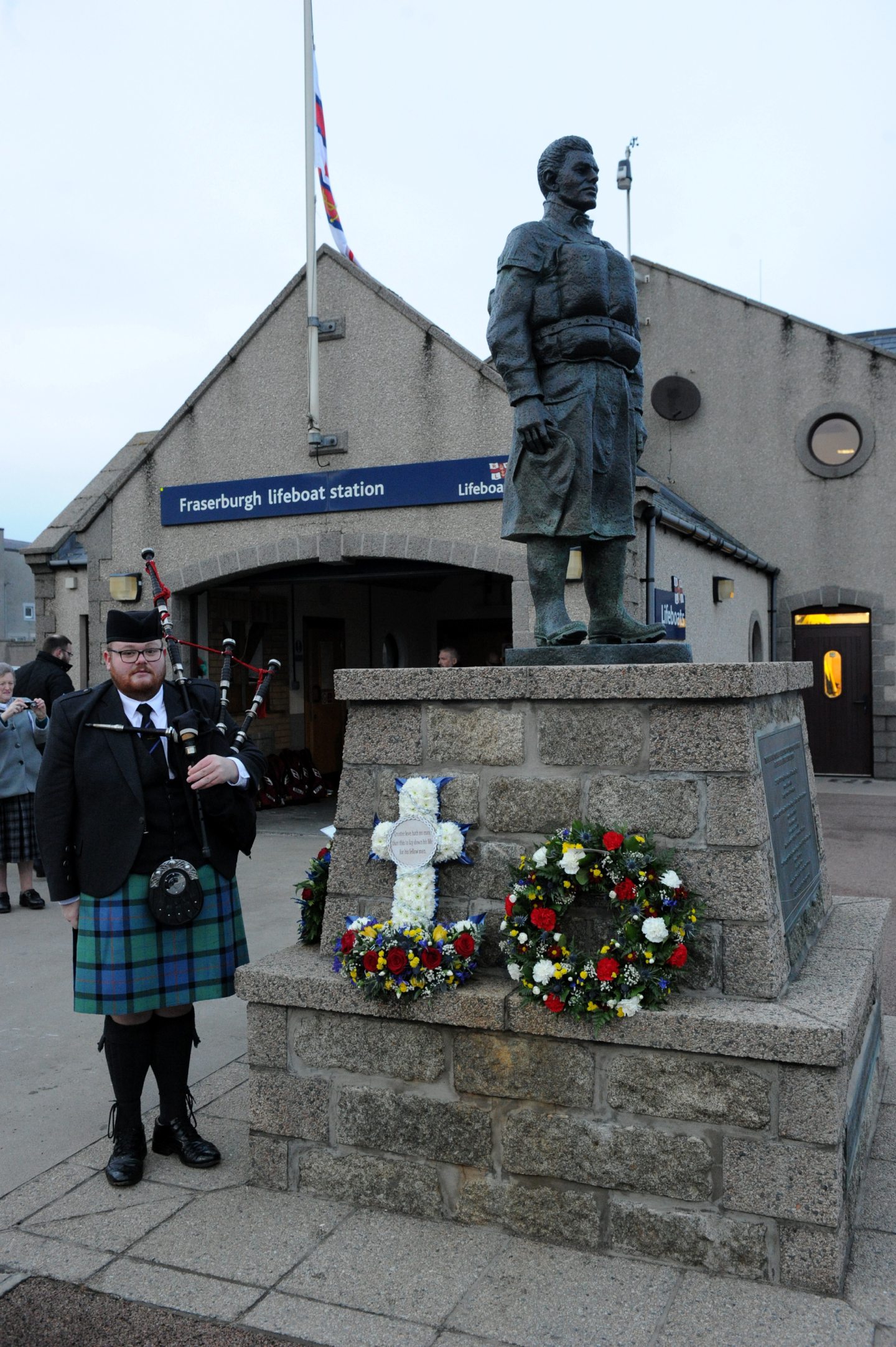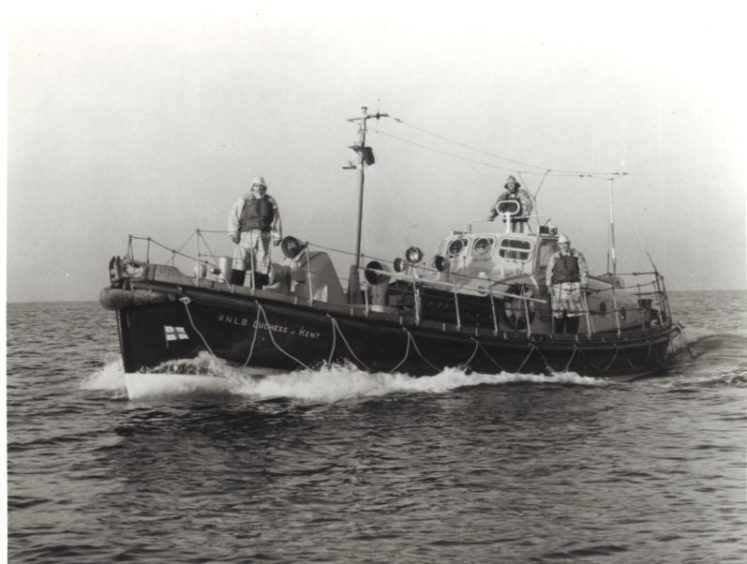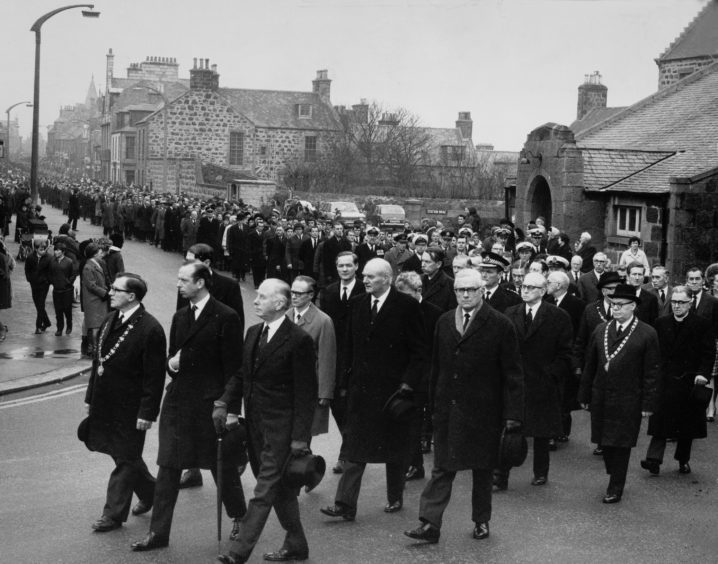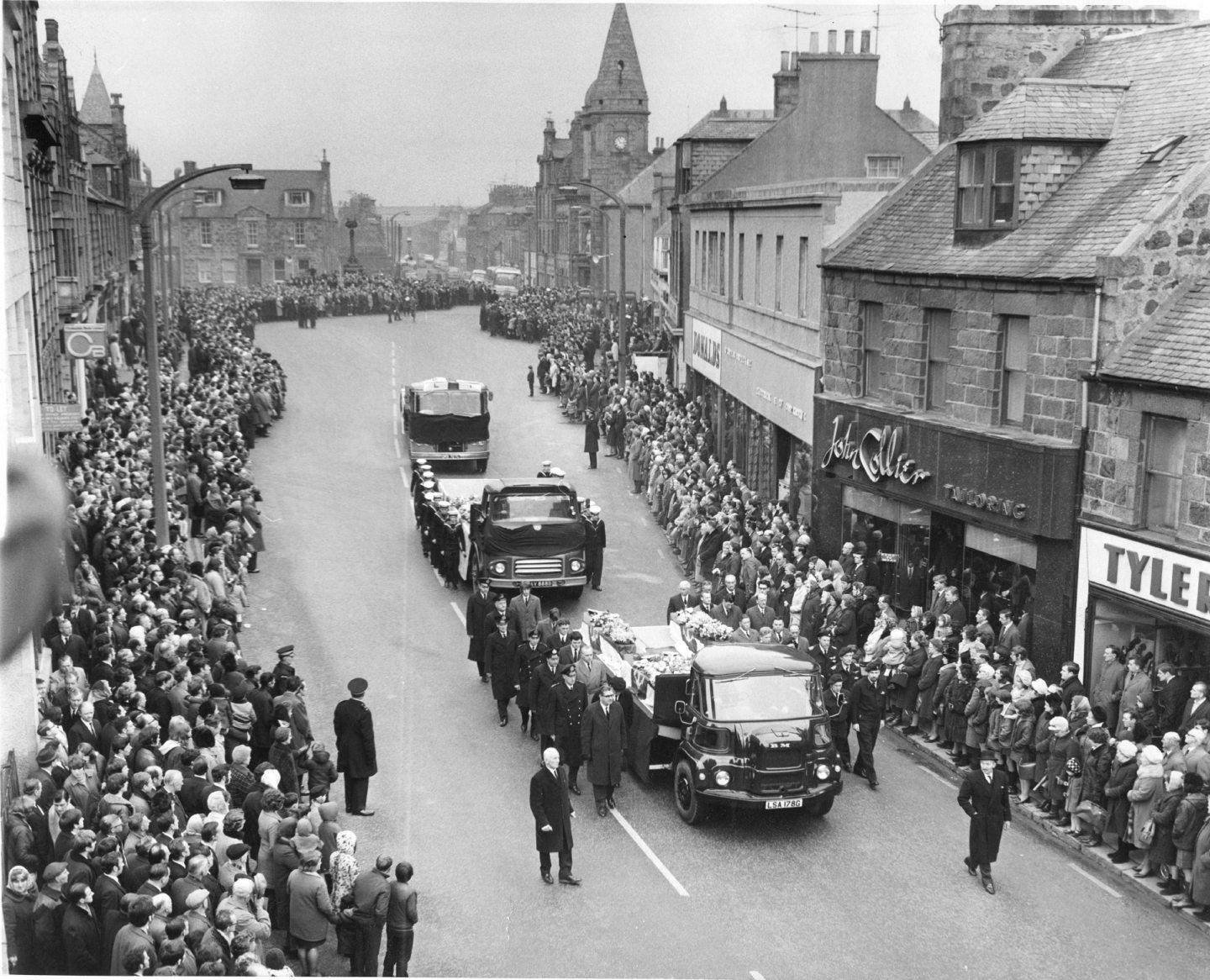A poignant memorial service has been held for RNLI volunteers who died in the Fraserburgh lifeboat disaster 50 years ago.
More than 300 people, among them Princess Anne, packed into the Old Parish Church on Sunday to remember their sacrifice.
The Duchess of Kent lifeboat was overturned by a freak wave in gale-force conditions while escorting a Danish fishing vessel to safety.
The tragedy, on January 21, 1970, left five women widowed and 15 children mourning the loss of a father.
During the service, the Princess Royal gave a reading of Psalm 46, Mark Hadden, who has been volunteering with the RLNI since August, 2018, read a moving poem by his grandfather William Hadden, who died in the 1970 disaster.
It referred to the Fraserburgh fishing boat disaster of October 1959.
Following the service, wreaths were laid by the memorial at the lifeboat station as crowds looked on.
Mr Hadden said: “The lifeboat disaster is imprinted in everyone from Fraserburgh’s minds.”
“Every one of those men should be remembered for what they gave and sacrificed that day.
“I know that I will always remember what they gave, and I hope that we will always take the time to remember their sacrifice.”
Coxswain of the current lifeboat, Vic Sutherland, said: “The service was very well supported with a lot families in attendance as well as the Princess Royal.
“The fact she was there makes it something special that all these families will remember when they think back on the 50th anniversary.”
He said the tragedy and those who gave their lives to help others lived-on in the memory of every crew member.
MP David Duguid also attended the service and said: “I was honoured to attend this memorial event, which had particular resonance on the 50th anniversary of the tragedy.”
“It is easy for those not involved in the industry to forget the perils of heading out to sea to make a living.”
While on service with the RNLI between 1959-1970, The Duchess of Kent lifeboat launched 23 times and saved 13 lives.
On Tuesday, another short service will be held to mark the actual date of the disaster at Fraserburgh Lifeboat Station.
History of Fraserburgh lifeboat disaster
On January 21, 1970, The Duchess of Kent lifeboat was launched in treacherous conditions to come to the aid of the Danish fishing vessel Opal.
Distress signals were reported around 40 miles out to sea shortly after 7am.
The Danish fishing vessel, which had four people on board, had sprung a leak and was described simply as being “in a sinking condition”.
Coxswain John Stephen was in command of a six man volunteer RNLI crew who were on the water by 7.34am.
By the time they arrived a Russian vessel had come to the temporary aid of the Opal and begun to tow it in the direction of shore.
It fell to the Duchess of Kent to escort both vessels back to port and it was doing so when disaster struck.
A huge wave caused the lifeboat to capsize. Five of the six crew members perished.
The sole survivor was John Buchan, who had been flung clear as the boat capsized. He was plucked from the water by the Russian ship.
The joint funeral for the lost crew was attended by 13,000 people.
The 1970 disaster was the third time a Fraserburgh lifeboat had been lost. There were earlier tragedies in 1919 and 1953, with 13 crew losing their lives.
Fraserburgh in mourning
One of the first on land to hear of the 1970 disaster was Neil Watson, 76, a former Press and Journal assistant news editor
As a young reporter in the Buchan office at Fraserburgh he knew the crew personally and here recalls the catastrophe.
“It was New Year and a time to look forward as close friends gathered round the organ for a sing-song at the home of assistant harbourmaster Johnny Stephen, his wife Bella and daughters Jennifer and Kathleen.
“Hymns we sung included the fishermen’s favourite ‘Will your Anchor hold in the storms of life’.
“Mrs Stephen had started choosing music for Jennifer’s wedding but sadly her husband would not have the joy of walking their elder daughter down the aisle.
“Three weeks later the cruel sea would claim the lives of Johnny, 45, the lifeboat coxswain, and four of his crew.”
Others to pay the supreme sacrifice were full-time engineer Fred Kirkness, 56; James Slessor Buchan, 38; James Buchan, 29: and William “Happy” Hadden, 34.
Five women were widowed and 15 children left fatherless.
The only survivor was John Jackson Buchan, 44, the second engineer.
It was Jackson who had the heartbreaking task of relaying the tragic message “From lifeboat. Four men dead.”
The fifth, Fred Kirkness, was swept away and his body never recovered.
The disaster sent a chill through the close-knit community.
Mr Watson said: “Jackson Buchan died in 1999, aged 76. He never returned to sea as a lifeboatman.
“I briefly interviewed him shortly after his ordeal but the man was deeply affected by the loss of his mates and later maintained a vow of silence.
The ill-fated vessel had been commissioned by the Duchess of Kent in 1954.
Her son, the Duke of Kent, President of the RNLI, led the nation’s hommage when a weeping Broch paid its last respects to its heroes on January 26.
Four coffins lay side-by-side in the Old Parish Church, draped by RNLI flags, with one space left in memory of Mr Kirkness.
On a plinth rested his uniform cap and an RNLI bronze medal for valour gained in a 1959 rescue.
It was estimated more than 10,000 slowly followed the coffins on the final mile-long journey to Kirkton Cemetery.
A poignant picture showed the Duke of Kent and a Broch laddie joined in grief. with his dad’s ceremonial lifeboat cap in hand.
A lifeboat disaster fund closed in April, 1970, and raised a staggering £103,723 – a sum greatly increased by later donations.
Read more:
